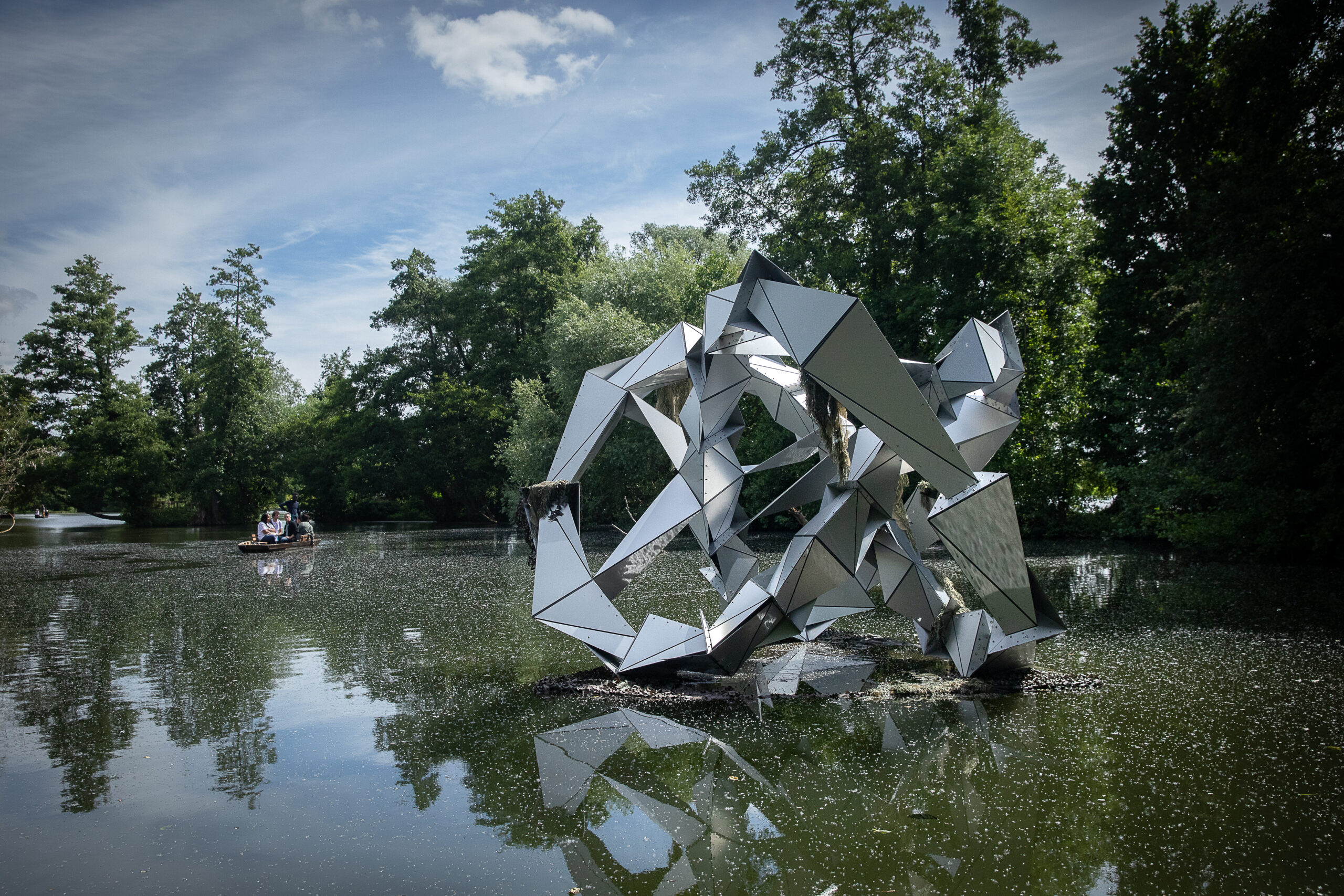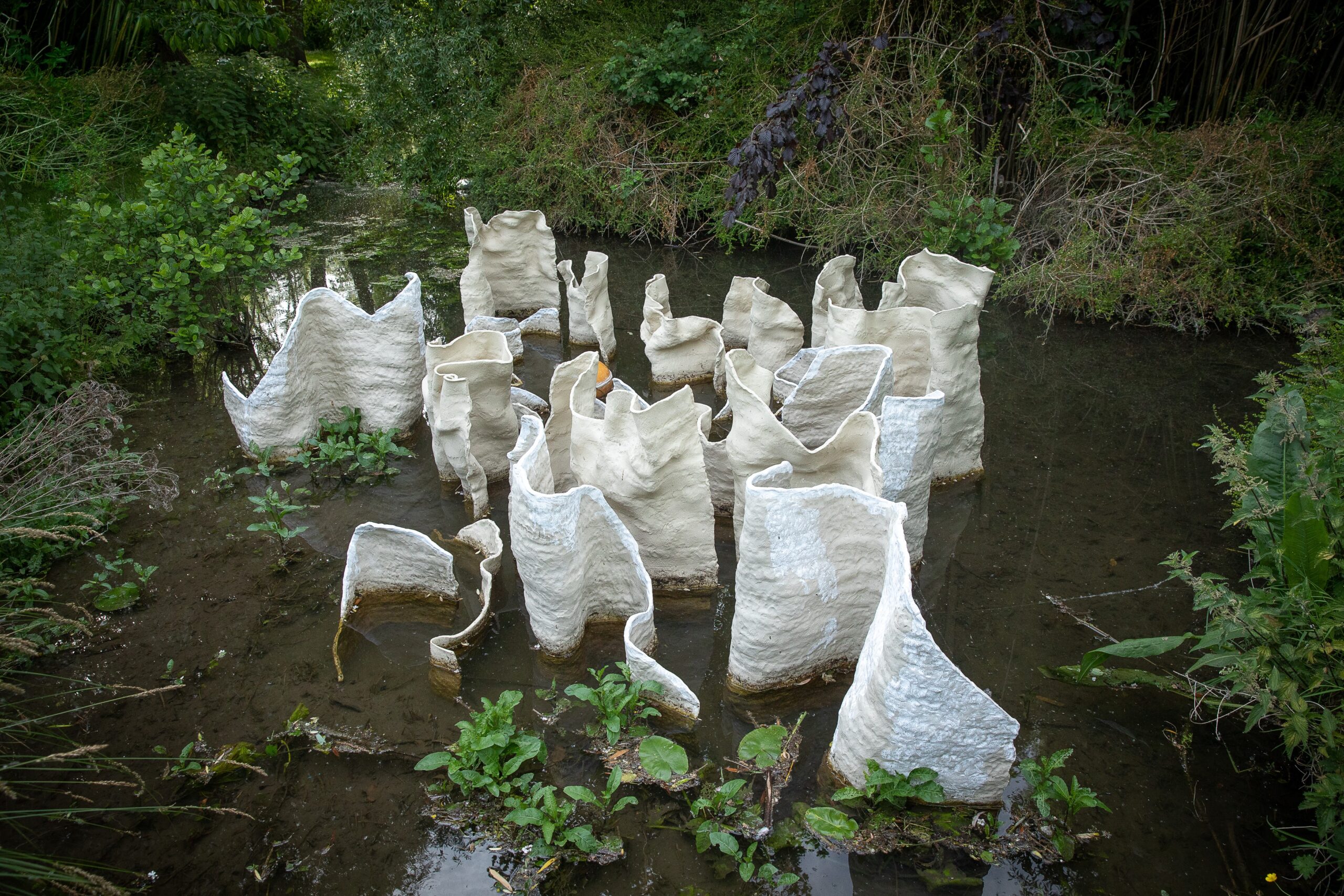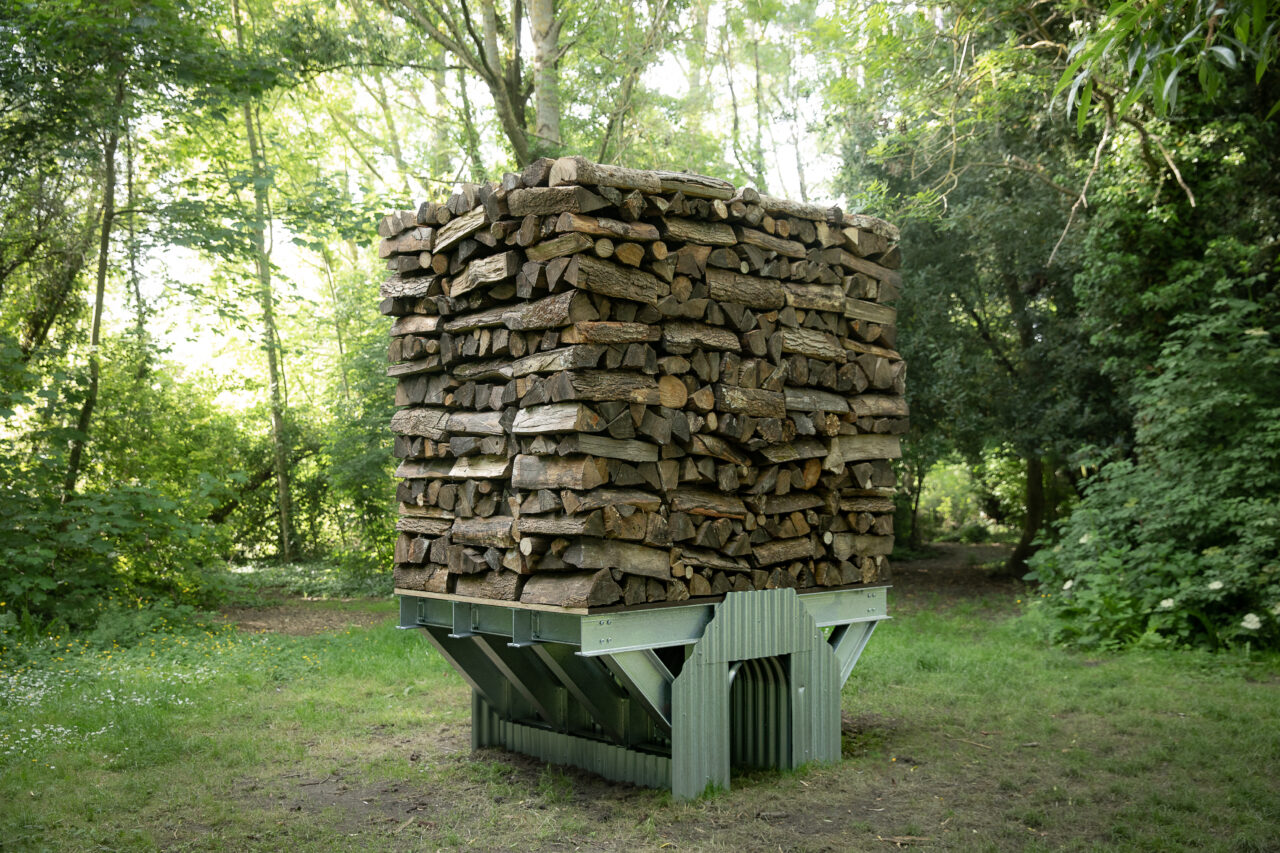For more than a year, Séverine Hubard has been thinking about the idea of protection. Do architectures protect us? How and from what to protect ourselves?
A shelter is a basic architectural structure or building that provides protection from the local environment. As her research progresses, a confusion arises between the refuge which is used to protect oneself from attacks in times of war and the (mountain) refuge which is used to protect oneself from storms and bad weather during the holiday period. The sculpture ABRI indeed takes up the plans of the Anderson shelter which was born in the gardens of the English workers caught in the fire of the bombardments of the Second World War. Inexpensive domestic shelter against bombs, it was distributed to poor families to be erected in their gardens for protection. During her research, Séverine Hubard discovers an archive image where the Anderson shelter is covered with a gigantic stock of firewood. Always fascinated by the way firewood is stored and stored, she associates this image with the Hortillonnages site, which must have served as a place of isolation to feed and heat the inhabitants of Amiens with wood during all kinds of crisis periods.
ABRI is composed of a base that carries the wooden stock that comes to hide its base. Here the firewood is not sheltered but shelters and hides the shelter. ABRI is an absurd sculpture where the question of balance is essential. To evoke the war through this proposal is to evoke the past of a city that has suffered from it and to speak about it to all generations. In this sense, the sculpture becomes a monument erected to these anonymous, silent witnesses of conflicts. The fun tunnel is accessible and practicable by all. Feeling the weight of the cubic meters of wood above your head is a unique experience to discover on the Île aux Fagots. ABRI is a call to live.
CAMON / PORT À FUMIER – Boat trip In CAMON, rent a boat for 2h30 and sail to the different plots invested around the pond of Clermont. The rental price of a boat is based on the number of people, from 1 to 6 max. including child(ren) under 3 years old We invite visitors to continue to respect barrier gestures in order to fight against the spread of COVID-19. For any request for information, you can send an email to communication@artetjardins-hdf.com Looking forward to welcoming you soon! The team of Art & Jardins | Hauts-de-FranceInternational Garden Festival |
Hortillonnages Amiens 2023
Visit of the exhibition by boat
Boarding pontoon
35 rue Roger Allou – 80450 Camon
* 20€ / 1-2 people. * 27€ / 3-4 people. * 32€ / 5-6 people. * free -3 years old
+ ASCO fee per person: €1 / 11 years and + * €0.50 / 3-10 years
>>> Only by online reservation
To read the terms and conditions of sale, click here
For security reasons, animals are not allowed in the boats. Strollers must be dropped off at reception.
If you want more details, we invite you to consult the evolution of the reception instructions and the health rules in force on the government website: https://www.gouvernement.fr/info-coronavirus
or call +33 6 78 53 55 92




